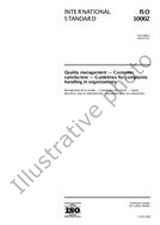We need your consent to use the individual data so that you can see information about your interests, among other things. Click "OK" to give your consent.

ISO 7626-5:2019-ed.2.0
Mechanical vibration and shock — Experimental determination of mechanical mobility — Part 5: Measurements using impact excitation with an exciter which is not attached to the structure
Translate name
STANDARD published on 2.12.2019
The information about the standard:
Designation standards: ISO 7626-5:2019-ed.2.0
Publication date standards: 2.12.2019
SKU: NS-977370
The number of pages: 28
Approximate weight : 84 g (0.19 lbs)
Country: International technical standard
Category: Technical standards ISO
The category - similar standards:
Annotation of standard text ISO 7626-5:2019-ed.2.0 :
Description / Abstract: This document specifies procedures for measuring mechanical mobility and other frequency-response functions of structures excited by means of an impulsive force generated by an exciter which is not attached to the structure under test. It is applicable to the measurement of mobility, accelerance or dynamic compliance, either as a driving point measurement or as a transfer measurement, using impact excitation. Other excitation methods, such as step relaxation and transient random, lead to signal-processing requirements similar to those of impact data. However, such methods are outside the scope of this document because they involve the use of an exciter which is attached to the structure. The signal analysis methods covered are all based on the discrete Fourier transform (DFT), which is performed mostly by a fast Fourier transform (FFT) algorithm. This restriction in scope is based solely on the wide availability of equipment which implements these methods and on the large base of experience in using these methods. It is not intended to exclude the use of other methods currently under development. Impact excitation is also widely used to obtain uncalibrated frequency-response information. For example, a quick impact test which obtains approximate natural frequencies and mode shapes can be quite helpful in planning a random or sinusoidal test for accurate mobility measurements. These uses of impact excitation to obtain qualitative results can be a first stage for mobility measurements. This document is limited to the use of impact excitation techniques for making accurate mobility measurements.
We recommend:
Technical standards updating
Do you want to make sure you use only the valid technical standards?
We can offer you a solution which will provide you a monthly overview concerning the updating of standards which you use.
Would you like to know more? Look at this page.



 Cookies
Cookies
